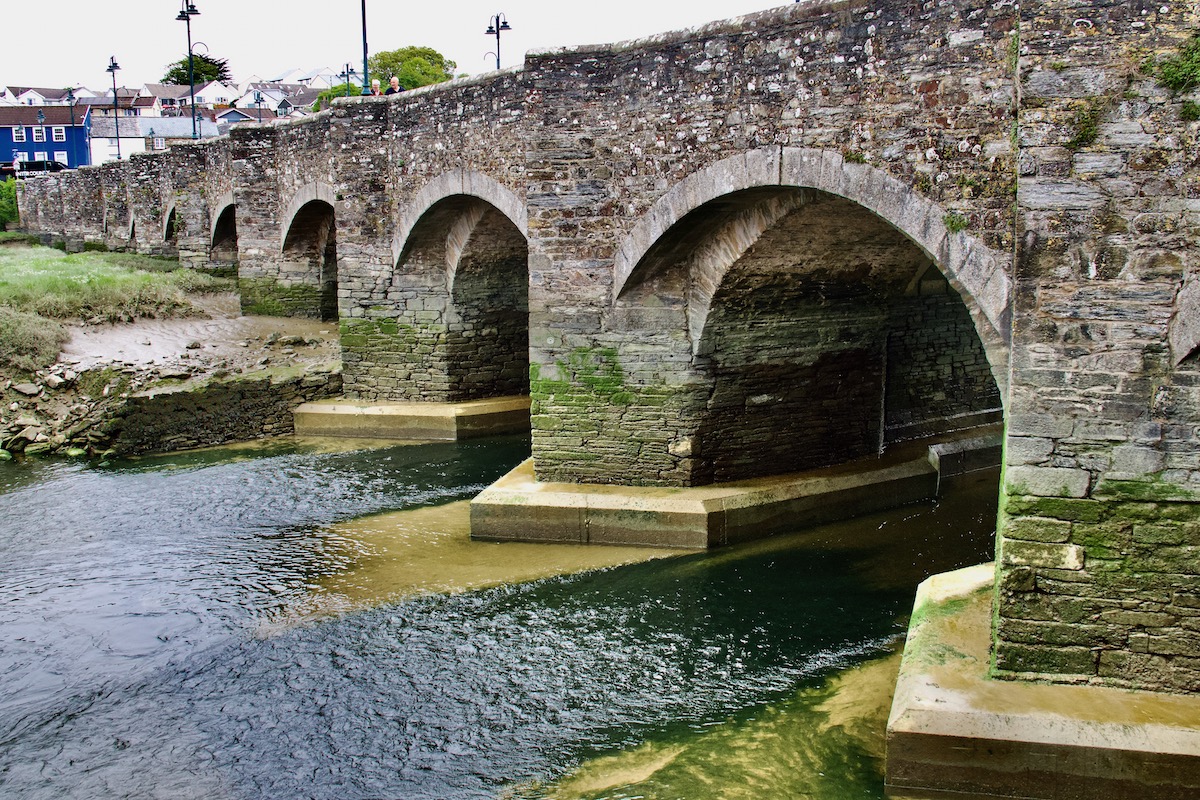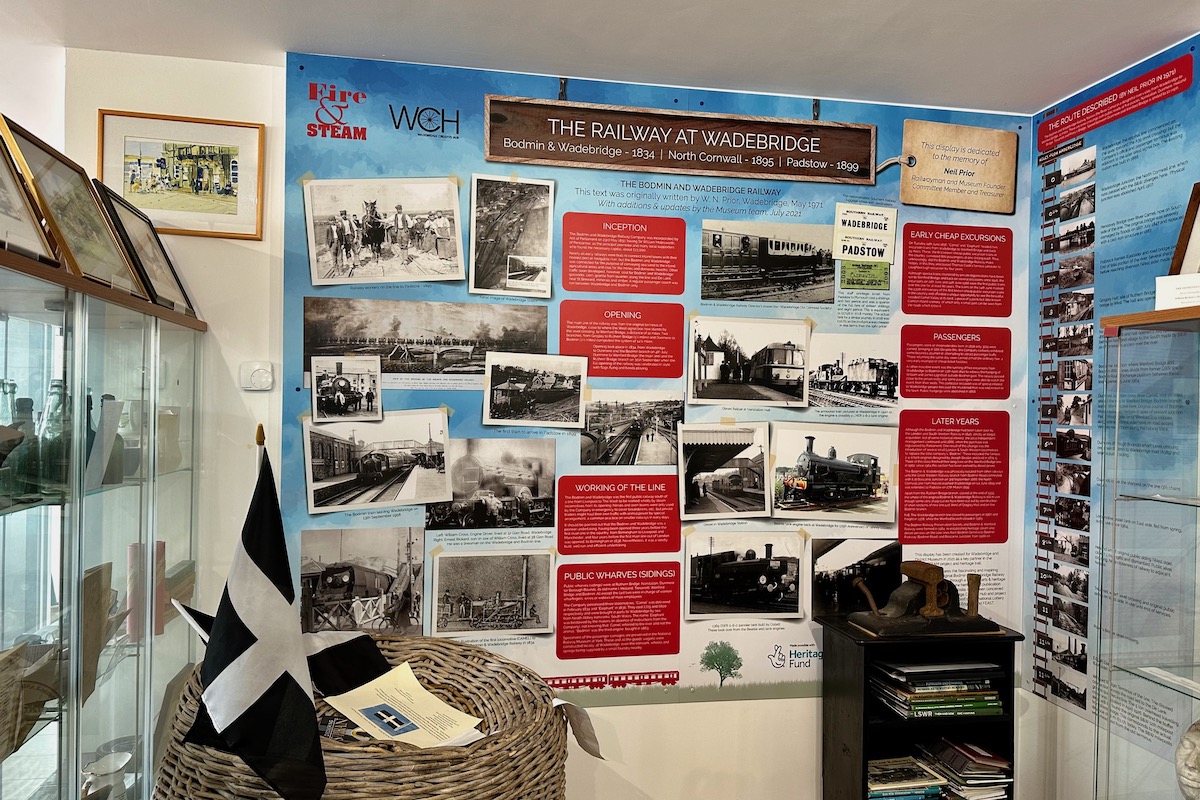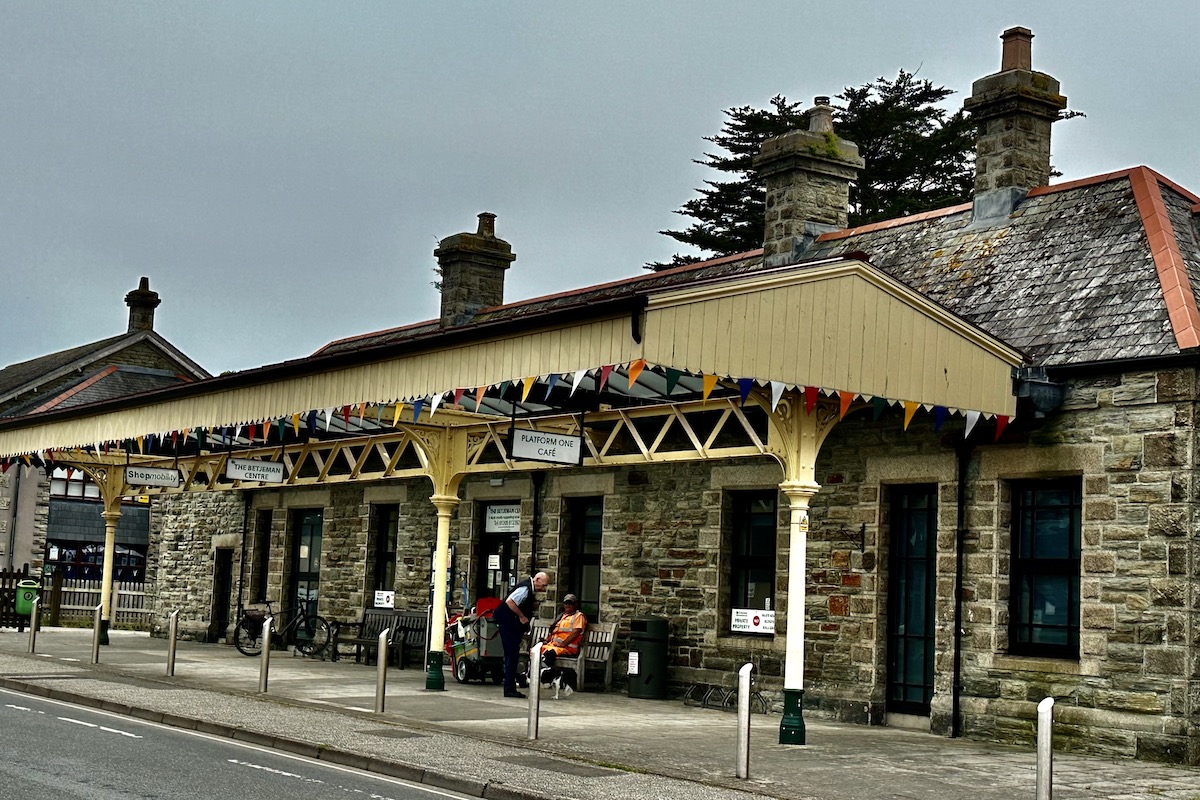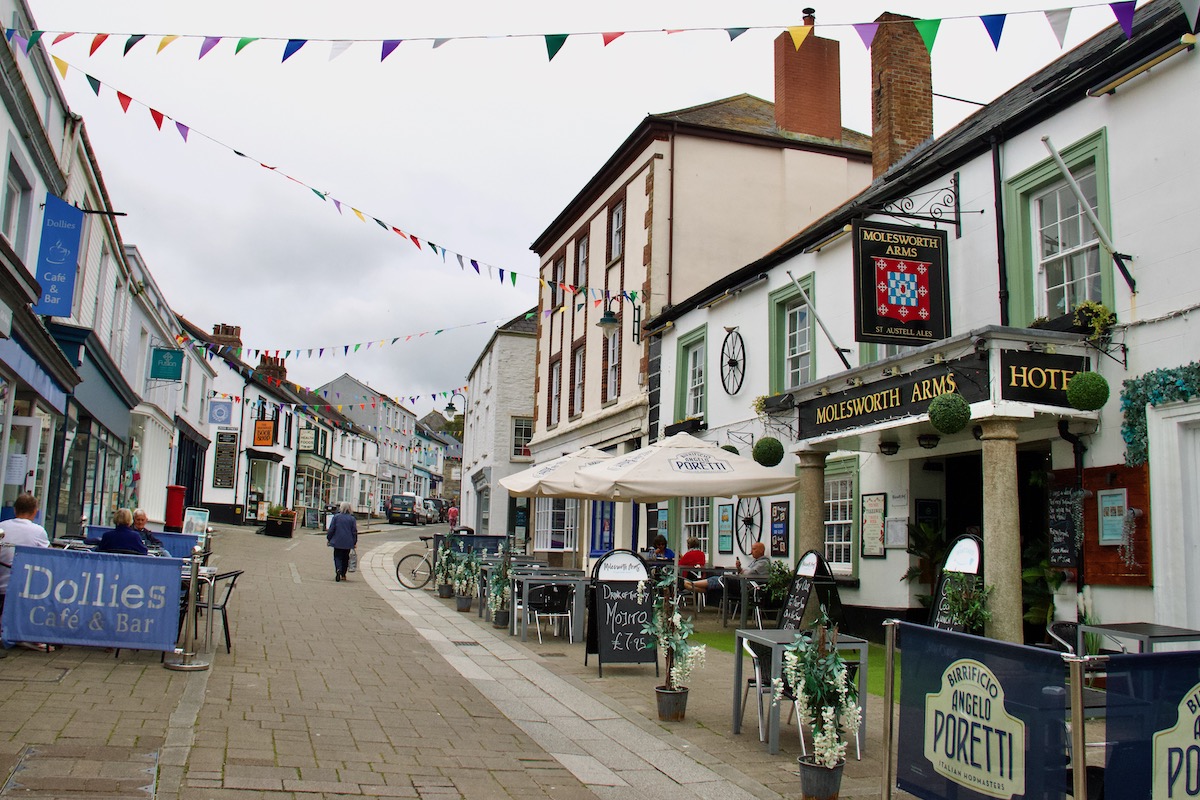
Wadebridge has placed in almost every best places to live guide since 2018 and in 2023 it was listed as one of the ten most expensive seaside towns in Britain. Why does this Cornish town attract these accolades?
Three factors brought prosperity to Wadebridge. The wool trade, the construction of the seventeen arch stone bridge and the railway. Following the closure of the railway in 1967 further development was slow and unlike other popular tourist destinations in Cornwall this medieval port retained its old buildings and its character. Today Wadebridge is one of the few Cornish towns with a butcher, greengrocer, fishmonger and bakery. And, every Thursday morning, traders sell local produce and crafts at the Wadebridge Country Market in the town hall.

Wadebridge was created when two parishes on either side of the River Camel estuary, St Breock and Egloshayle, were linked by the Seventeen Arch Bridge
Seventeen Arch Bridge in Wadebridge
During the 1460s John Lovibond, then vicar of Egloshayle, was responsible for the construction of a stone bridge across the Camel River. Legend has it that the bridge was built on sacks of wool to support the foundations in the muddy river bed. But it is more likely it was funded by the medieval wealth of the town due to the wool trade. Originally this bridge did have seventeen arches but since then the river banks have been extended and only 13 arches can be distinguished. Wade became Wadebridge, it became a market town and ships sailing up the estuary would stop here and transfer their cargo to barges or horse-drawn carts. The bridge was widened in 1852 and again in1962 to cope with the increasing traffic. This old bridge is the longest bridge in Cornwall and is recognised as being one of the finest examples of a medieval bridge in Britain. For many years it carried a busy main road until the town was bypassed in 1991. The townsfolk were left in peace to enjoy the town’s pretty setting on the banks of the River Camel.

River Camel in Wadebridge
Following the establishment of the railway in Wadebridge barges were no longer used to take heavy goods inland and the importance of Wadebridge as a port declined. Silting up of the river hastened this decline and by the 1950s commercial activity had ceased. Since then the marshes on both sides of the river have been reclaimed and developed as recreational areas, the Jubilee Field and Egloshayle Playing Fields on the Egloshayle side. The parish church, Egloshayle Church, is also on this side of the river.

The Parish Church of Wadebridge
The Parish Church, a Grade 1 Listed Building is dedicated to St Petroc, but known locally as Egloshayle Church, the name of the ancient village in which it was built. This church stands on the road that runs beside the river. Parts of the church date back to the twelfth century. It was rebuilt during the fifteenth century and the tower was added. The south porch was added in the sixteenth century and in1867 a major restoration resulted in the shape it is today. There are eight bells in the tower – the oldest one dates back to the eighteenth century – and the church has a strong tradition of bell-ringing.

The Anneka Rice Challenge Bridge in Wadebridge
For many years’ residents of Egloshayle had to walk down to the old stone bridge to cross over into the town centre. Finally, in 1991 the long discussed footbridge came to fruition when it was featured on the Challenge Anneka television programme. A suspension footbridge was built across the River Camel in a few days.

The Regal Cinema in Wadebridge
It was 1931 when the Regal Cinema, then known as the Cinedrome, opened its doors to the first customers. This cinema was built by the Pope family of Padstow. Until January 1967 the cinema was operated by several local owners. It became known as the Regal Cinema when it was operated by West Cornwall Cinemas Ltd. It was struggling to keep going and facing closure when it was acquired by the Wadebridge based construction company WTW. This company was also operating the Capitol Theatre in St Austell and the Capitol Cinema in Padstow. The cinema was renovated during the 1960’s and 1970’s and in 1985 a second theatre was added. Since then the traditional film projectors have been replaced with digital projectors. Today Screen One at the Regal offers luxury Pullman Seating and still features Screen Curtains endowing it with a traditional ambience surrounding state of the art pictures and sound. Wadebridge also boasts a small museum.

The Museum in Wadebridge
The Wadebridge and District Museum is situated in the centre of Wadebridge. It moved to its new premises in September 2013 having been homeless since the original premises were closed for redevelopment. It is a charming exposition relating the history of Wadebridge. Here visitors can enjoy an interesting display of artefacts found in the area, see photographs of bygone eras and discover the impact the railway had on the town. Originally, the Bodmin and Wadebridge railway, established by Sir William Molesworth of Pencarrow in 1834, transported stone and china clay from the quarries around Bodmin Moor. This isolated line was connected to the Great Western line, on the national rail network in 1888. In 1895 it was connected to the new North Cornwall line in 1895. The line was extended to Padstow in 1899. When this line was closed the route was regenerated into a beautiful cycling and walking track – the famous Camel Trail, where you can still see some of the old stations and platforms. The station building is near the museum and still serves the town – as a community centre.

The Old Station in Wadebridge
Following a major reorganisation of the National rail network passenger trains stopped running through Wadebridge in 1967 and freight services ceased in 1978. The old railway station became redundant, or so it seemed. During the 1980’s voluntary contributions raised sufficient funds to refurbish and extend the derelict old station. After extension repairs to the roof and complete restoration of the railway canopy it became a lovely community centre open to all. This comfortable space includes a café and the John Betjeman Centre dedicated to railway memorabilia and the poet John Betjeman who described the journey from Bodmin through Wadebridge to Padstow as ‘the most beautiful train journey.’ A member of the Molesworth family was also responsible for the Town Hall in the centre of the town.

h3. The Town Hall in Wadebridge
The local lord of the manor, Sir Paul Molesworth of Pencarrow was behind the idea of building a hall to create a venue for events. It was built in the Gothic revival style and financed by a company formed for this purpose that was known as the Molesworth Hall and Exchange Company. When it was opened in 1888 it was known as the Molesworth Hall and Exchange. Wadebridge Town Trust acquired the building in 1945 by which time it was in a dilapidated condition. In the early 1960s the local parish council raised sufficient funds to refurbish the building but it lost many of its original features. It was reopened in 1962 as the Wadebridge Town Hall and Community Centre and in 1974 the new Wadebridge Town Council moved in. The building features a large mural by Victor Martin Harvey illustrating the construction of the Seventeen Arch Bridge. It also serves as a tourist information centre. The Town Hall was one of many benefits bestowed on the town from the Molesworth family whose name lives on as a street and a public house.

Molesworth Street in Wadebridge
The Molesworth family moved from Northamptonshire to Pencarrow (close to Wadebridge) towards the end of the sixteenth century when John Molesworth was appointed Auditor to the Duchy of Cornwall by Queen Elizabeth 1. Determined to be part of the local community the family have brought many benefits to the town. In recognition of this a street and a local pub have been endowed with their name. Molesworth Street is a pedestrianised shopping street featuring a number of independent shops. Wadebridge’s ‘oldest, finest watering hole’ on the same street was re-named The Molesworth Arms in 1817. This historic inn boasts a ghostly apparition of coach and horses said to appear in the courtyard every New Year’s Eve.

Wadebridge, ideally situated on the estuary of the River Camel close to Padstow, offers an interesting contrast to the more famous seaside towns of Cornwall. An excellent hotel in this area and highly recommended is the St Moritz Hotel in Trebetherick.
Available on GPSmyCity.com
This article is now featured on GPSmyCity. To download this article for offline reading or travel directions to the attractions highlighted in this article, go to Walking Tours in Wadebridge on GPSmyCity
Valery Collins is the Experienced Traveller
 An excellent raconteur, Valery has been writing about her experiences on the road since she started travelling 25 years ago. After publishing four books she turned to online travel writing.
An excellent raconteur, Valery has been writing about her experiences on the road since she started travelling 25 years ago. After publishing four books she turned to online travel writing.